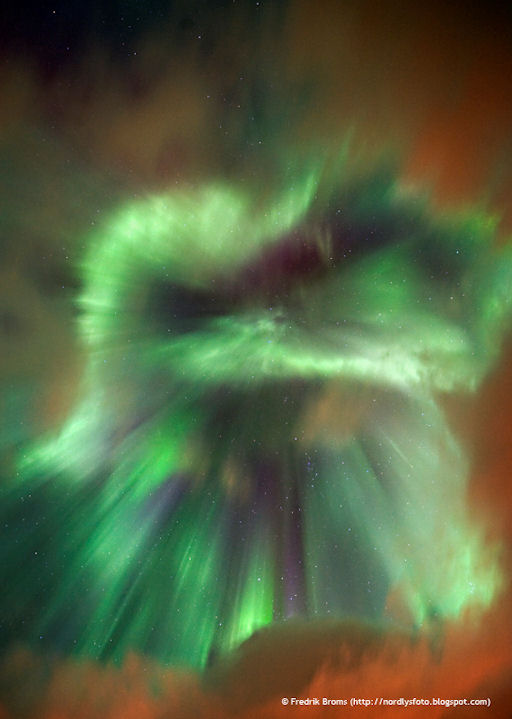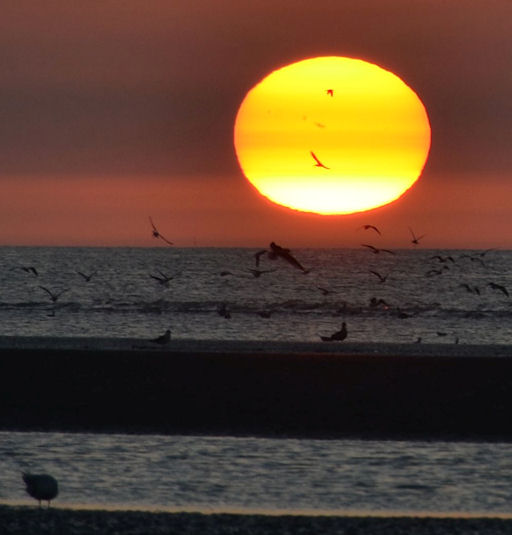They came from outer space--and you can have one! Genuine meteorites are now on sale in the Space Weather Store. | | |
MAGNETIC AFTERSHOCKS: A minor geomagnetic storm erupted earlier today, Sept. 28th, causing beautiful Wednesday-morning auroras in Canada and some northern-tier US states. These are, essentially, aftershocks of the severe storm on Sept. 26th. More reverberations are possible tonight. Aurora alerts: text, voice.
A NIGHT TO REMEMBER: A coronal mass ejection (CME) hit Earth's magnetic field around noon Universal Time on Sept. 26th. The impact set the stage for a night to remember. As soon as darkness fell over Scandinavia, auroras filled the sky with such intensity that they were visible through rain clouds. Fredrik Broms photographed the scene from Kvaløya, Norway:

"These were some of the most amazing auroras I have ever seen," says Broms, a longtime observer of the Arctic lights. "The colours were absolutely stunning with purple and deep blood-red in addition to the green. It was a night I will never forget!
Sky watchers at the highest latitudes should remain alert for auroras as Earth's magnetic field continues to reverberate from the CME impact. Aurora alerts: text, voice.
UPDATED: September 2011 Aurora Gallery
[previous Septembers: 2010, 2009, 2008, 2007, 2006, 2005, 2004]
BIG SUNSPOT: The source of the CME that hit Earth on Sept. 26th is sunspot AR1302. Measuring more than 150,000 km from end to end, the sprawling active region is visible even without a solar telescope. Here it is among the seagulls at sunset on Sept. 27th:

Damien Vens took the picture from the beach in Koksijde, Belgium. "I used an off-the-shelf Nikon D7000 digital camera," he says. "The sunspot was an easy target." (Note to photographers: Never look at the sun through unfiltered optics such as camera viewfinders; even a low-hanging sun can be blindingly bright.)
AR1302 has quieted down since unleashing dual X-flares on Sept. 22nd and 24th. Nevertheless, NOAA forecasters estimate a 25% chance of more X-flares during the next 24 hours. Any such eruptions would be Earth-directed as the sunspot crosses the center of the solar disk. Solar flare alerts: text, voice.
more images: from James W. Young of Seaside, Oregon; from Andy Devey of Barnsley South Yorkshire; from J. Stetson and students in Hinckley, Maine; from Ali Norouzi of Karaj, Iran; from Theo Ramakers of Social Circle, GA; from Stefano Sello of Pisa, Italy; from Phil Greaves of Sydney Australia; from Stefan Plach of Stadt Wehlen, Saxony, Germany;

